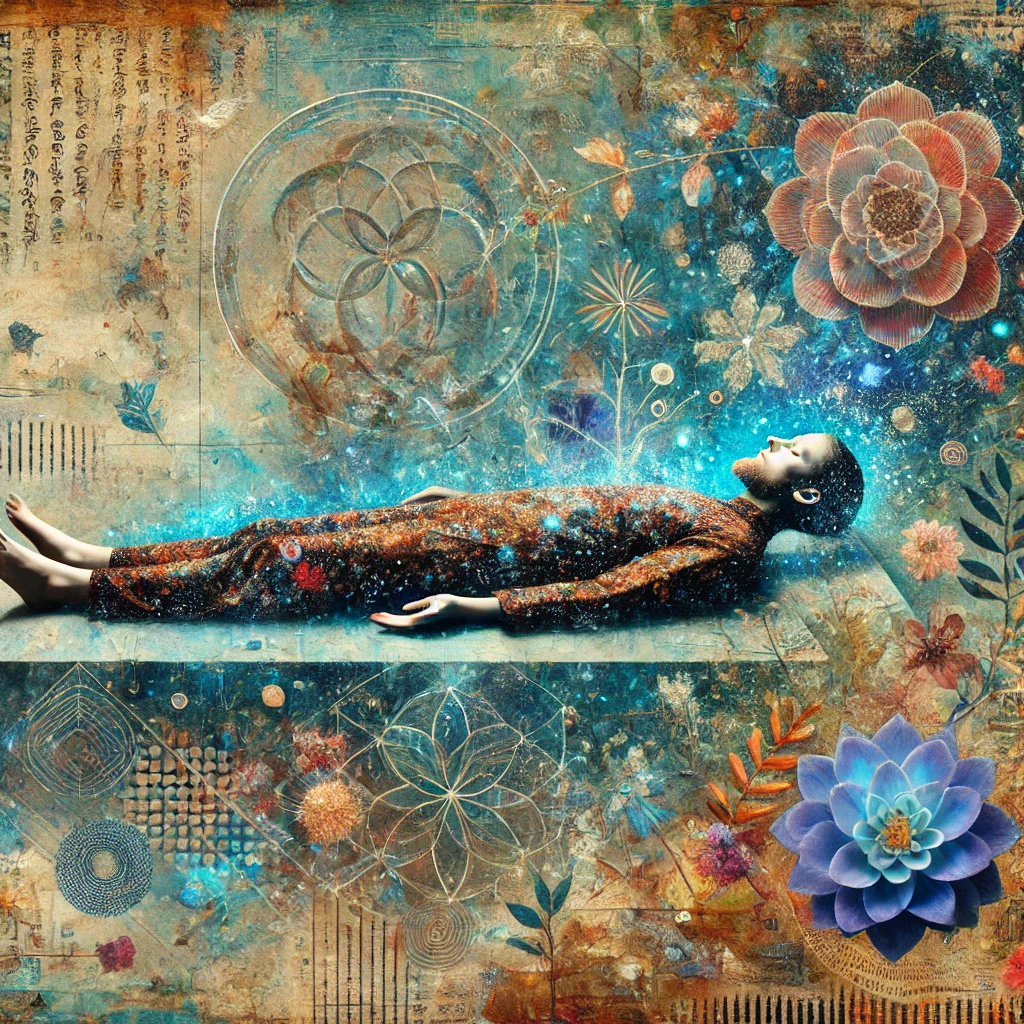
Anxiety can feel overwhelming, making your mind race and your body tense. But what if you could calm both with a simple, research-backed technique? Enter Body Scan Meditation—a powerful mindfulness practice that systematically guides your awareness through different parts of your body, helping you ground yourself in the present moment.
In this article, we’ll explore how Body Scan Meditation works, the science behind it, its benefits, and a step-by-step guide to incorporating it into your daily routine to ease anxiety.
What is Body Scan Meditation?
Body Scan Meditation is a mindfulness practice where you mentally “scan” your body from head to toe, observing sensations without judgment. This technique was popularized through Mindfulness-Based Stress Reduction (MBSR), a program developed by Dr. Jon Kabat-Zinn in the late 1970s.
Unlike meditation styles that focus on breathwork or visualization, Body Scan Meditation emphasizes physical sensations, making it especially useful for anxiety grounding. By directing attention away from anxious thoughts and toward the body, it promotes relaxation and self-awareness.
| cience | Research | Benefits |
|---|---|---|
| Body scan meditation enhances interoceptive awareness, improving the ability to identify and respond to internal bodily signals6. | An 8-week study showed that body scan meditation improved interoceptive processes, including heartbeat perception accuracy2. | Reduces stress and anxiety by shifting focus away from racing thoughts to physical sensations3. |
| The practice activates the parasympathetic nervous system, countering the stress response5. | A systematic review and meta-analysis found that body scan meditation had a small but positive effect on mindfulness compared to passive control groups4. | Fosters mindfulness and cultivates a heightened sense of awareness that can extend to daily life3. |
| Body scan meditation causes changes in brain regions associated with self-regulation, attention, and emotional regulation6. | Research indicates that mindfulness meditation, including body scans, can enhance self-regulation and attention6. | Helps identify and relieve stress when practiced regularly and combined with other mindfulness techniques9. |
Body scan meditation works by systematically directing attention to different parts of the body, promoting relaxation and awareness. This practice can be particularly effective for those dealing with anxiety, as it helps ground individuals in the present moment and reduce the impact of stress on both the mind and body59.
While the benefits of body scan meditation are promising, it’s important to note that consistent practice is key to experiencing significant improvements in anxiety management and overall well-being. Additionally, for individuals with severe anxiety or a history of trauma, it’s advisable to proceed carefully and consider working with a therapist when exploring this technique9.
How Does Body Scan Meditation Work?
When anxiety strikes, your body activates the sympathetic nervous system, triggering the well-known “fight-or-flight” response. Body Scan Meditation helps counteract this by activating the parasympathetic nervous system, also known as the “rest-and-digest” response. This shift signals your body to relax, reducing stress hormones and fostering a sense of calm.
The Science Behind Body Scan Meditation for Anxiety
A growing body of research highlights the effectiveness of Body Scan Meditation for anxiety reduction and overall mental well-being:
- A 2019 study published in JAMA Psychiatry found that mindfulness-based interventions, including Body Scan Meditation, significantly reduced anxiety in individuals with Generalized Anxiety Disorder (GAD).
- Neuroscience research suggests that practicing Body Scan Meditation increases activity in the prefrontal cortex, the brain region responsible for rational thinking and emotional regulation.
- A 2020 meta-analysis concluded that mindfulness meditation techniques, including body scanning, were associated with lower cortisol levels (the body’s primary stress hormone) and improved well-being.
These findings demonstrate how Body Scan Meditation rewires the brain and body to respond to stress more effectively, making it an invaluable tool for anxiety relief.
Benefits of Body Scan Meditation for Anxiety Grounding
✅ Reduces Anxiety Symptoms
Regular practice has been shown to decrease symptoms of anxiety and panic attacks by calming the nervous system.
✅ Enhances Emotional Regulation
By tuning into bodily sensations, you create space between your thoughts and emotional reactions, reducing impulsive responses to anxiety triggers.
✅ Improves Sleep Quality
Struggling with insomnia? Body Scan Meditation relaxes the body and quiets the mind, making it easier to fall and stay asleep.
✅ Strengthens the Mind-Body Connection
Anxiety often disconnects us from the present moment. Body scanning helps you re-establish awareness of physical sensations, fostering self-awareness.
✅ Lowers Cortisol (Stress Hormone) Levels
Scientific studies confirm that regular meditation practice reduces cortisol levels, resulting in a greater sense of calm and emotional balance.
Step-by-Step Guide to Body Scan Meditation for Anxiety
Follow this simple guide to get started with Body Scan Meditation today:
1. Find a Quiet Space
Sit or lie down in a comfortable, quiet space where you won’t be disturbed.
2. Close Your Eyes & Focus on Your Breath
Take slow, deep breaths, inhaling through your nose and exhaling through your mouth. Allow your body to relax.
3. Start at the Top of Your Head
Gently bring awareness to the crown of your head. Notice any sensations—warmth, tingling, or tension—without trying to change anything.
4. Move Down Your Body
Shift your attention gradually down through different parts of your body:
- Forehead, eyebrows, and temples
- Jaw, neck, and shoulders
- Arms, hands, and fingers
- Chest, abdomen, and lower back
- Hips, thighs, knees, and calves
- Feet and toes
5. Acknowledge Sensations Without Reacting
If you notice tension or discomfort, acknowledge it without judgment. Instead of trying to “fix” it, simply observe it and breathe deeply.
6. Conclude with Full-Body Awareness
Once you reach your toes, take a deep breath and expand your awareness to your entire body. Feel present, grounded, and at peace.
Frequently Asked Questions (FAQs)
1. How long should a Body Scan Meditation session last?
Sessions can range from 5 to 30 minutes. Beginners may start with 5-10 minutes and gradually increase over time.
2. Can Body Scan Meditation be done lying down?
Yes! Many people find it easier to relax and connect with bodily sensations while lying down, especially before bed.
3. How often should I practice Body Scan Meditation?
For anxiety relief, aim to practice at least 3-5 times per week. Daily practice can lead to more lasting benefits.
4. Can Body Scan Meditation help with panic attacks?
Yes! This technique shifts focus away from racing thoughts and onto the body, helping you regain control and ground yourself in the present moment.
5. Is Body Scan Meditation a replacement for therapy?
While beneficial, Body Scan Meditation should be used as a complementary tool, not a substitute for professional therapy or medical treatment.
Final Thoughts
Body Scan Meditation is a simple yet powerful way to ease anxiety and reconnect with your body. By making this practice a part of your routine, you can cultivate inner calm, emotional resilience, and overall well-being.
???? Try this practice tonight before bed and see how your body responds. If you found this guide helpful, share it with a friend or loved one who could benefit from anxiety relief!




Leave a Reply